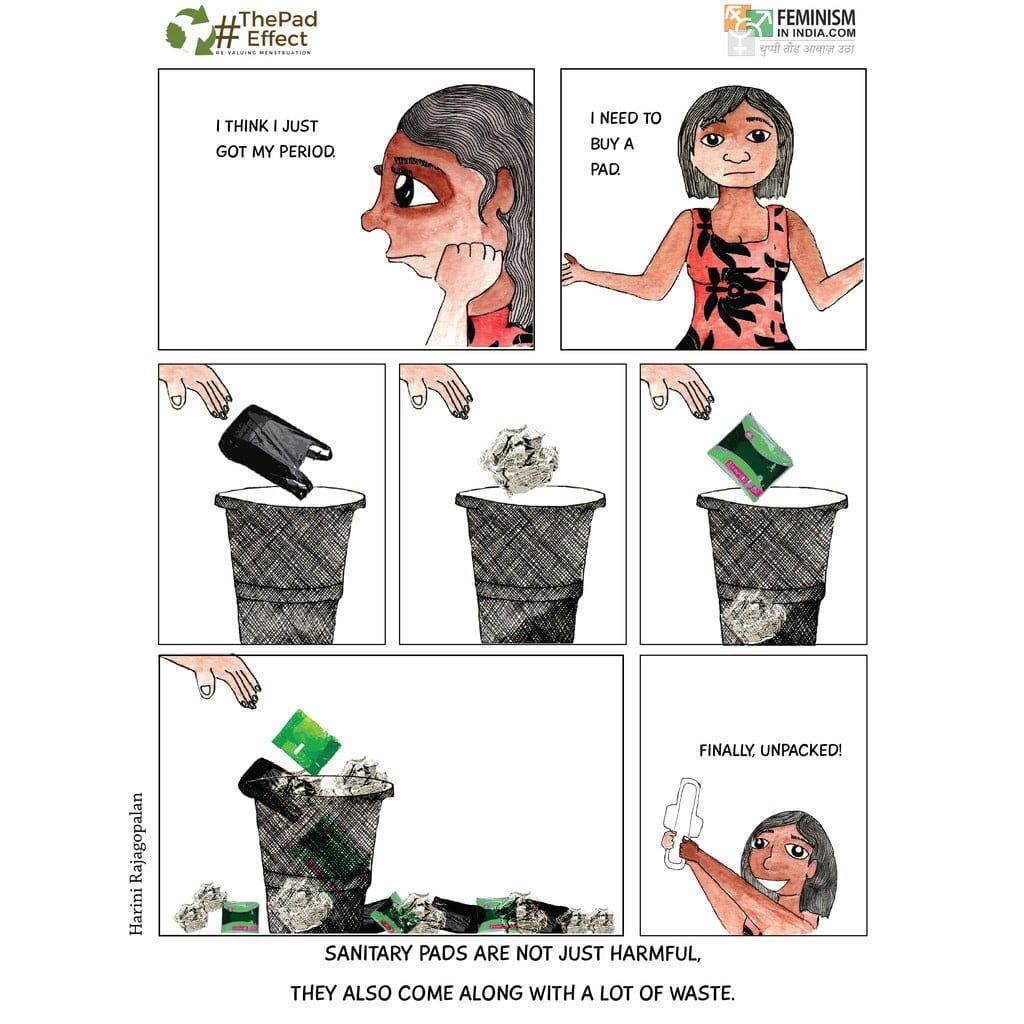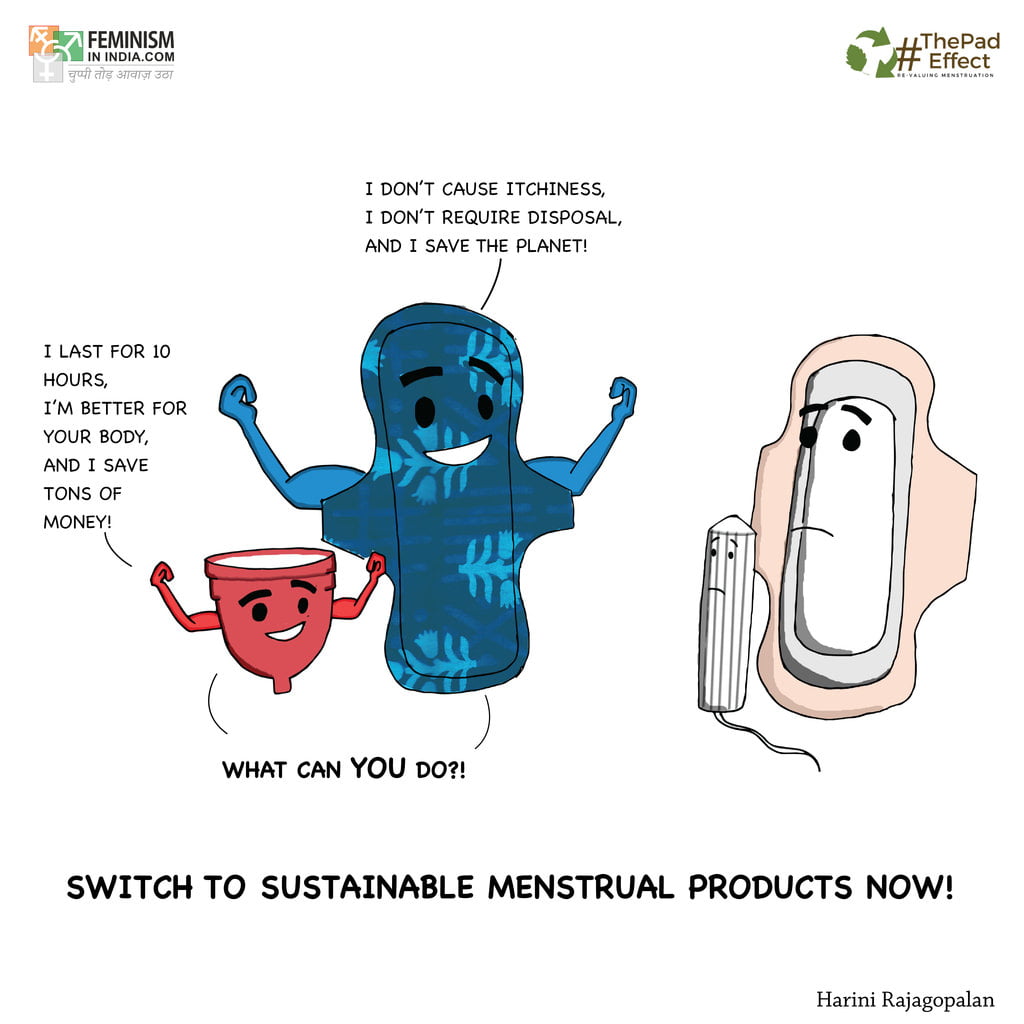What is menstrual waste?
A person typically uses about 120 plastic sanitary napkins a year. These single use and throw products represent approx 125kg of sanitary waste generated per person during the menstruating years. When you consider that India has 355 million women and trans* people of reproductive age this becomes a staggering amount of sanitary waste for a country that has inadequate solid waste disposal mechanisms
Commercially available sanitary napkins can take 500-800 years to break down! Using alternative products like cloth pads, menstrual cups and biodegradable pads can prevent thousands of tons of sanitary waste.
What does the law in India say?
According to Earth & Us, there are no concrete laws in place for menstrual waste management in India. It is treated as reject waste and one possible categorization under sanitary waste is it being treated as bio-medical waste. The following are the laws relating to menstrual waste management:
Bio-Medical Waste Rules, 1998
- Under this law, waste containing blood, body fluids or faeces should be regarded as bio-medical waste. Strictly speaking, such interpretation requires the assumption that the process of collecting menstrual fluids takes place in the course of ‘treatment’ of human beings.
- Obviously, the treatment of menstrual hygiene waste as biomedical waste faces opposition from municipalities due to the sheer volume (an estimated 5% of all MSW) and complex logistics associated with separate handling of this stream of waste.
Municipal Solid Waste Rules, 2016
- The existing MSW Rules contain no provisions relating to Sanitary Waste.
- However, these rules are currently under revision, and the latest draft has provisions for dealing with sanitary waste as a separate waste stream, only to the extent of separate packaging at source of generation and thereafter inclusion in dry/non-biodegradable category of waste. (This excuses brand owners of any extended producers responsibilities and will also result in a bulk of sanitary waste ending up in landfills or incineration plants).
Plastic Waste Rules, 2011
- Even though commercial sanitary napkins contain a significant amount of plastic, this law does not clearly state that commercial sanitary napkins and diapers come under its purview. It is left up to the court to interpret the law in this context.
- The law has an Extended Producer’s Responsibility (EPR) clause, according to which, the municipal authority may ask manufacturers – either collectively or individually – to provide the required finance to establish plastic waste collection centres.
What are we doing?
Feminism in India in collaboration with Eco Femme, Uger Pads, SHE Cup, Boondh, Shomota and Saathi are launching a campaign #ThePadEffect to revalue and rethink menstruation – because Life depends on it. The campaign explores the intersection between sustainable menstruation and culture. Our collective attitudes toward menstruation contributes towards our denial and perpetuates the need to conceal it, which is supported by disposable culture and maintained by disposable sanitary products.
May 28 is globally celebrated as Menstrual Hygiene Day and to commemorate the international day, we will culminate our campaign on May 28.
How can you participate?
- Send us pictures, artwork and illustrations of sustainable menstrual products you use with the hashtag #ThePadEffect on Twitter, Facebook and Instagram.
- Tweet to us @FeminismInIndia with #ThePadEffect with your experiences of alternative menstrual products and participate in our tweet-chats on the issue!
- Write in to us at info@feminisminindia.com about why you switched over to sustainable menstrual products. We need more stories of women who use alternative menstrual products!
#ThePadEffect Comics

Featured Image Credit: Harini Rajagopalan for Feminism in India 
Comic by Harini Rajagopalan for Feminism in India
#ThePadEffect Video
Read all #ThePadEffect articles here.
About the author(s)
Feminism In India is an award-winning digital intersectional feminist media organisation to learn, educate and develop a feminist sensibility and unravel the F-word among the youth in India.






